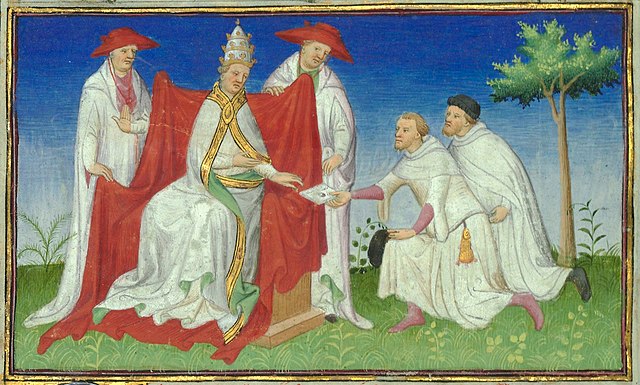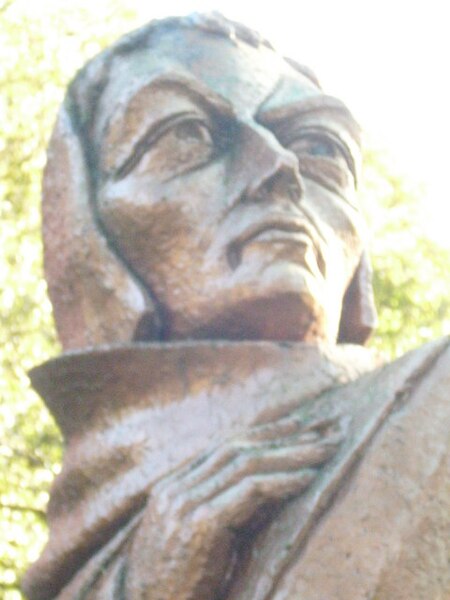Pope Gregory X, born Teobaldo Visconti, was head of the Catholic Church and ruler of the Papal States from 1 September 1271 to his death and was a member of the Secular Franciscan Order. He was elected at the conclusion of a papal election that ran from 1268 to 1271, the longest papal election in the history of the Catholic Church.
Fresco of Gregory X by Buonamico Buffalmacco (c. 1330)
Niccolò and Maffeo Polo remitting a letter from Kublai Khan to Pope Gregory X in 1271.
Papal bulla of Gregory X
The effigy of Pope Gregory X in Arezzo.
The Secular Franciscan Order is the third branch of the Franciscan Family formed by Catholic men and women who seek to observe the Gospel of Jesus by following the example of Francis of Assisi. Secular Franciscans are not like the other third orders, since they are not under the higher direction of the same institute. Brothers and sisters of the Secular Franciscan Order make a spiritual commitment (promises) to their own Rule, and Secular Franciscan fraternities can not exist without the assistance of the first or second Franciscan Orders. The Secular Franciscan Order was the third of the three families founded by Francis of Assisi 800 years ago.
The Secular Franciscan Order and other Franciscan movements are disciples of Francis of Assisi (1182–1226). Painting by El Greco (1541–1614).
Bonaventure (1221–1274), painting by Claude François, ca. 1650–1660.
John Duns Scotus (c1266–1308)
Secular Franciscans can be recognized by the Tau Cross they wear as a lapel pin (here) or pendant.








